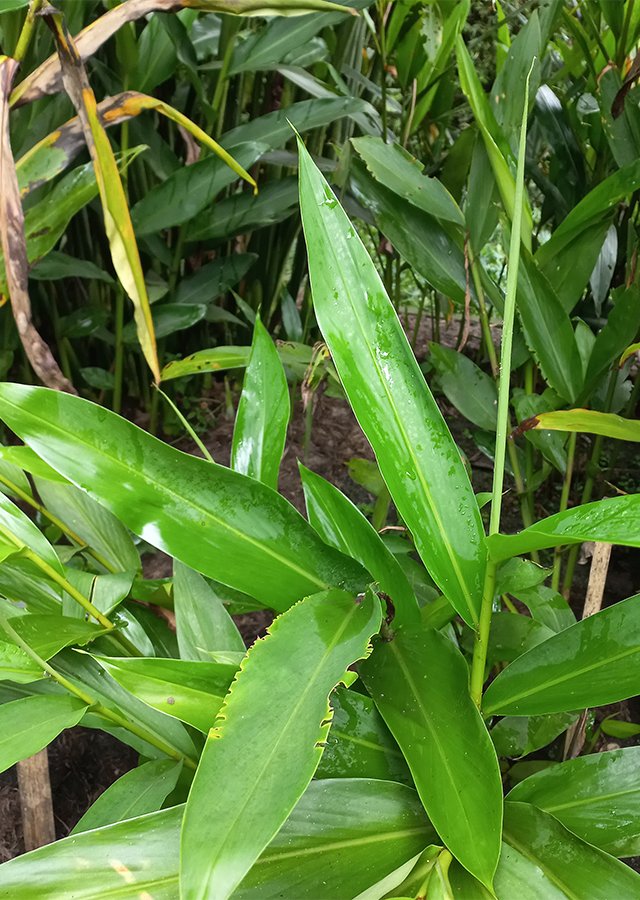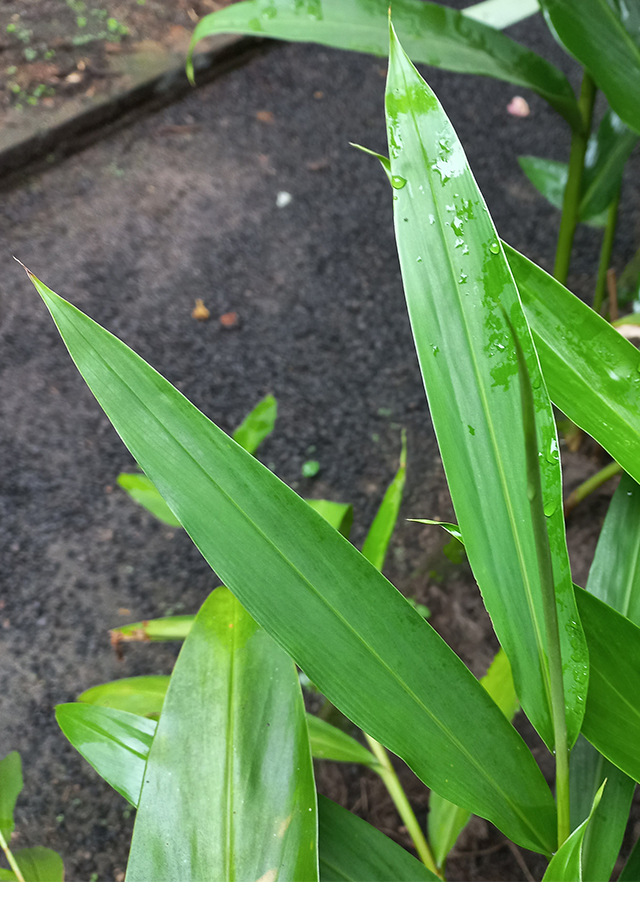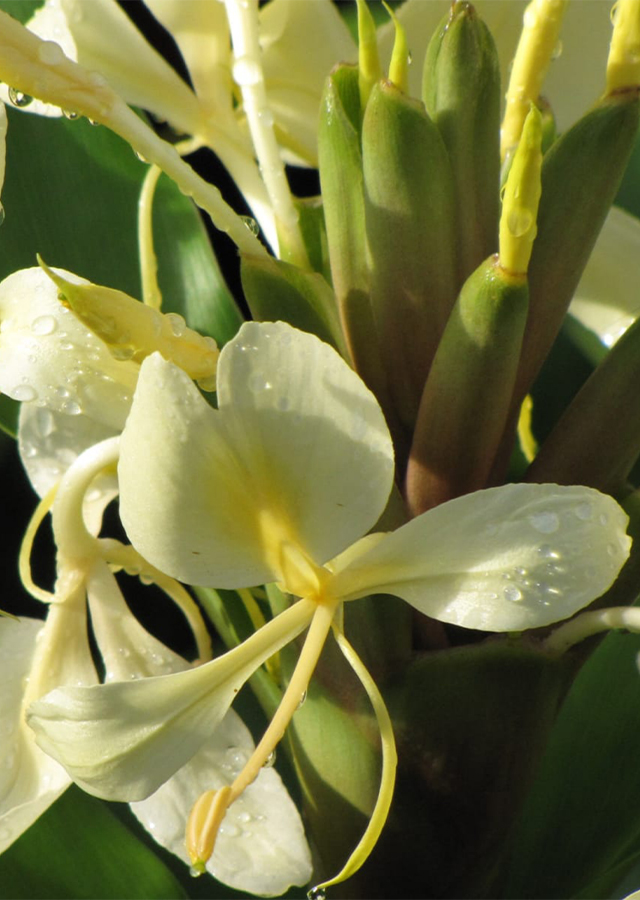Traditional Herbs from Hedychium flavescens
medicine_gargle_for_swollen_throat
- Wash thoroughly the rhizomes\u00a0yellow gandasuli.
- Crush the tubers then squeeze out the water.
- Boil the water from the tuber juice until it boils, add a little\u00a0salt.
- Let stand until warm/cool then gargle.
asthma
- Take the rhizomes of yellow gandasuli and wash them until clean.
- Crush the tubers then squeeze them to get the water add a little\u00a0honey.
- Drink.
What is Hedychium flavescens Looks like??



Parts of Hedychium flavescens that could be used
- Stem
- Rhizome
Hedychium flavescens Distribution
Hedychium flavescens is native to the eastern Himalayas, including Nepal and northeastern India (Assam, Meghalaya and Sikkim). Hedychium flavescens has been introduced to many locations around the world as an ornamental plant. The root extract is used as an ingredient in commercial cosmetic preparations as an emollient. Contains essential oil containing beta pinene which has antimicrobial, antibacterial, antifungal, anthelmintic and anti-mosquito activity. This plant has also been used in several countries as a traditional medicine, such as in the Philippines where the stems are used to treat tonsillitis.Agroecology of Hedychium flavescens
Yellow Gandasuli grows in humid tropical areas, where it can be found at altitudes up to 2,000 m above sea level, sometimes up to 2,300 m above sea level, preferring areas with average annual rainfall in the range of 1,000 - 5,000 mm, average annual temperature 11 - 20 �C. Native to the highlands, it can also tolerate cooler temperatures if grown in fully humid climates, liking to grow in open environments filled with warm, moist light. Requires well-drained soil with moderate to high fertility.
Morphology of Hedychium flavescens
- The rhizome is large, branched, thick-fleshed, 3.5 cm in diameter, and erect pseudo-leafy stems 1-3 m high.
- Leaves are stiff, sessile green, oval to lanceolate, up to 60 cm long and 12 cm wide ,\u00a0at the bottom\u00a0pubescent (finely hairy) with a thinning base, membrane edges and apex tailed, tapered.
- The flowers are colored creamy white to pale yellow or yellow-white conical in bunch, fragrant with yellow stamens Petals 3.5-4 cm long, hairy, about half the length of the corolla tube and almost as long as the bract, petals are split. on 1 side, the entire apical margin. The corolla tube is 7-8.5 cm long, the lobes are linear, the lateral stamens are 3-3.5 cm wider flowers upright, creamy yellow with an orange spot at the base, obcordate, longer than wide, and apex 2-lobed Anthers white to cream, upper part of anther protruding slightly beyond the lip, ovary hairy. Stigma funnel-shaped, margin bearded.
- The fruit is a spherical capsule 1-2 cm in diameter with three valves, containing many seeds but not visible in much of its invasive range.
Cultivation of Hedychium flavescens
Generative propagation is by seeds (sometimes rarely formed) while vegetative propagation uses rhizome (rhizome) splitting.
Hedychium flavescens, more details :
Chemical Content of Hedychium flavescensCardiac glycosides, phenols, saponins, alkaloids, tannins, phlobatin, terpenoids, pinene, sesquiterpenes.
Benefits of Hedychium flavescens
Treats tonsillitis, swelling of the throat, broken bones, reduces fever, antirheumatic, tonic, stimulants, skin infections, mouthwash for swollen throats and is also taken for swollen stomachs, colic, hemorrhoids, chest tightness, coughs, asthma and bronchitis .
Simplisia of Hedychium flavescens
Another Facts for Hedychium flavescens :
Synonym of Hedychium flavescensHedychium emeiense Z.Y.ZhuHedychium panzhuum Z.Y.ZhuHedychium subditum Turril
Habitus of Hedychium flavescens
Herb. Annual herb, 1-3 m high
Habitat of Hedychium flavescens
- Riverside", "Forest", "Roadside", "Land
No comments:
Post a Comment